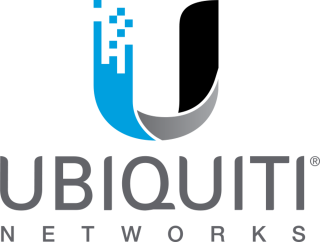In today’s digital age, ensuring robust IT security is not just an option but a necessity for businesses of all sizes. However, many small to medium-sized enterprises (SMEs) face the challenge of implementing effective cybersecurity measures on a tight cybersecurity budget. This constraint should not deter you from safeguarding your company’s digital assets. With cyber threats evolving rapidly, the cost of being unprepared can far outweigh the investment in preventive cybersecurity strategies. By focusing on cost-effective solutions, you can significantly enhance your organization’s resilience against cyber threats without breaking the bank.
This article will guide you through assessing your current cybersecurity posture, leveraging free and open-source solutions, and training your employees in cybersecurity best practices. You’ll learn how to implement cost-effective security measures such as restricting access, using a virtual private network (VPN), deploying firewalls, and installing antivirus software. Additionally, we emphasize the importance of regularly reviewing and updating your security practices to stay ahead of potential cyber threats. By the end of this article, you will be equipped with essential tips to fortify your cybersecurity defenses without exceeding your budget.
Assess Your Current Cybersecurity Posture
To effectively safeguard your business against cyber threats, it’s crucial to assess your current cybersecurity posture. This involves a thorough evaluation of your existing security tools, policies, and budget allocation. Here’s how you can conduct this assessment:
Identify Existing Security Tools
Start by taking inventory of the cybersecurity tools you currently have in place. This includes antivirus software, firewalls, and encryption protocols. Ensure that your antivirus software is set to run scans following each update and that your operating system’s firewall is activated. If your employees work remotely, verify that their home systems are also protected by effective firewalls.
Evaluate Current Security Policies
Review your company’s cybersecurity policies to determine their effectiveness in protecting your data and assets. This includes policies on password protection, data encryption, and access control. Ensure that employees use strong, unique passwords and change them regularly. Evaluate whether multi-factor authentication is in place to add an extra layer of security. It’s also vital to have protocols for reporting lost or stolen equipment.
Determine Budget Allocation
Understanding your financial capacity for cybersecurity measures is essential. Assess the costs associated with maintaining or upgrading your current security tools and policies. Consider the potential financial impact of cyber threats against the effectiveness of your existing measures. This analysis will help you allocate your cybersecurity budget more effectively, ensuring that critical areas of vulnerability are addressed without overspending.
By conducting a comprehensive assessment of your cybersecurity posture, you can identify key areas that need improvement and ensure that your security measures are robust enough to protect your business against the evolving landscape of cyber threats.
Utilize Free and Open Source Solutions
In the realm of cybersecurity, leveraging free and open-source solutions can be a game-changer, especially for small to mid-sized businesses operating on tight budgets. These solutions not only reduce costs but also offer flexibility and community support that can enhance your security posture.
Open Source Security Tools
Open source security tools are widely available and can provide robust protection without the hefty price tag of commercial software. Tools like Kali Linux offer an array of cybersecurity utilities and penetration testing tools, which are essential for identifying vulnerabilities. For password management, KeePass provides a secure environment for storing sensitive information and is available under a freemium model, allowing basic use without cost.
Network security can also be enhanced with tools like Wireshark for network protocol analysis and OpenVAS for vulnerability scanning. These tools allow you to monitor and evaluate your network in real-time, ensuring that you can respond to threats promptly.
Free Alternatives to Paid Software
For those looking to minimize costs, there are free versions of paid cybersecurity products that offer core functionalities. These versions are particularly useful for small teams beginning their security journey, allowing them to test and understand various cybersecurity processes without financial commitment. Tools like the community version of Burp Suite provide functionalities for web app security testing, which can be crucial for safeguarding your digital assets.
Leveraging Community Support
One of the significant advantages of open-source software is the supportive community of developers and users. Platforms like Security Onion provide a comprehensive suite for threat detection and network monitoring, backed by a community that contributes to regular updates and troubleshooting. Engaging with these communities can provide additional insights and assistance, which is invaluable for teams with limited resources.
By integrating these free and open-source solutions, you can effectively enhance your cybersecurity measures without overstretching your budget. This approach not only saves money but also allows for greater control and customization of your security tools, ensuring they are well-suited to your business’s specific needs.
Train Employees in Cybersecurity Best Practices
Training your employees in cybersecurity best practices is a critical step in protecting your organization from cyber threats. Here, we focus on three key areas: the basics of phishing and malware, the importance of strong passwords and two-factor authentication (2FA), and safe browsing habits.
Basics of Phishing and Malware
Phishing attacks are a prevalent method used by cybercriminals to gain unauthorized access to sensitive information. Employees should be trained to recognize the signs of phishing, such as urgent requests for information, misspellings, or suspicious links in emails. Regular simulated phishing exercises can help reinforce this knowledge and prepare employees to act correctly in the event of a real attack. Additionally, understanding the risks associated with malware and the importance of not downloading suspicious attachments is crucial.
Importance of Strong Passwords and 2FA
Strong, unique passwords are the first line of defense against cyber intrusions. Encourage employees to create passwords that include a mix of upper and lower case letters, numbers, and symbols, and to change these passwords regularly. Implementing two-factor authentication adds an extra layer of security, significantly reducing the risk of unauthorized access. Training should include the use of password managers to safely store and manage passwords, reducing the risk of compromise.
Safe Browsing Habits
Safe browsing habits are essential in maintaining cybersecurity. Employees should be instructed never to click on unverified links, avoid using public Wi-Fi for sensitive transactions, and keep their software and operating systems updated to defend against vulnerabilities. Educating them on the difference between secure (https) and insecure (http) connections and the significance of the padlock icon in the address bar can prevent unauthorized data access.
By focusing on these areas, you can significantly enhance your team’s ability to prevent and respond to cyber threats, safeguarding your organization’s digital assets.
Implement Cost-Effective Security Measures
To optimize your cybersecurity without straining your budget, focus on leveraging built-in security features, automating security processes, and conducting regular backups. These strategies can significantly enhance your security posture with minimal investment.
Use Built-in Security Features
Your devices and software come equipped with various security features that are designed to protect your data and privacy. For example, enabling and configuring settings such as strong passcodes, Face ID, and Touch ID can provide robust security for devices with minimal effort. Additionally, features like Find My iPhone and Stolen Device Protection add layers of security in case your device is lost or stolen. Utilize these built-in tools to their fullest potential by regularly reviewing and adjusting your security settings to ensure that they meet your current needs without additional costs.
Automate Security Processes
Implementing automation in your cybersecurity strategy can significantly reduce the workload on your security team while enhancing your defensive capabilities. Security automation involves the use of technology to perform routine security tasks such as incident detection and response, which can lead to faster threat identification and mitigation. Tools like SOAR (Security Orchestration, Automation, and Response) and SIEM (Security Information and Event Management) systems help streamline security operations, ensuring consistent application of security policies and reducing human error. This not only improves efficiency but also cuts down on the operational costs associated with manual security management.
Conduct Regular Backups
Regular backups are a critical component of a resilient cybersecurity strategy. They ensure that you can restore your data quickly in the event of a cyberattack or data loss, minimizing downtime and operational disruption. Implement automated daily backups of critical data and systems, and consider using cloud-based solutions for added security and scalability. Regular testing of your backup and recovery processes is also essential to ensure that they work effectively when needed. This practice helps in maintaining business continuity and protects against potential data breaches or losses.
By focusing on these cost-effective security measures, you can strengthen your cybersecurity defenses without exceeding your budget.
Regularly Review and Update Security Practices
To ensure your cybersecurity measures remain effective and adaptive to new threats, it’s crucial to regularly review and update your security practices. Here are some key strategies to consider:
Keep Software Up to Date
Regular software updates are essential for closing security vulnerabilities and protecting against the latest threats. Enable automatic updates to ensure that all software, including operating systems and applications, are always up-to-date. This proactive measure can significantly reduce the risk of cyberattacks exploiting known vulnerabilities.
Conduct Periodic Risk Assessments
Periodically reassess your cybersecurity risks to adapt to changes in your business environment or threat landscape. Schedule regular audits to evaluate the effectiveness of your current security measures and identify any new potential threats. This should include a comprehensive review of your security policies, systems, and procedures. Utilize a standardized risk assessment template to maintain consistency and thoroughness in your evaluations.
Adjust Policies Based on New Threats
As cyber threats evolve, so should your security policies. Stay informed about the latest security threats and adjust your policies accordingly. This may involve introducing new security measures or updating existing protocols to better protect your organization. Regular communication with your team about changes and updates is vital for ensuring everyone is aware and compliant with the new security practices.
By implementing these practices, you can maintain a robust cybersecurity posture that evolves with your organization’s needs and the shifting cyber threat landscape.
Conclusion
Throughout this article, we’ve delved deep into the realm of implementing effective cybersecurity measures on a small budget, emphasizing that financial constraints should not compromise an enterprise’s digital defense. By assessing your current cybersecurity posture, leveraging cost-effective tools, educating your workforce, and adopting a proactive approach to security, small to medium-sized enterprises can establish a resilient shield against cyber threats. These practices underscore the balance between affordability and robust security, ensuring businesses do not have to choose between financial viability and cyber safety.
In conclusion, the journey towards enhancing cybersecurity is ongoing and requires constant vigilance, regular updates, and an adaptive mindset. By placing a strong emphasis on cost-effective strategies, such as utilizing free and open-source solutions, conducting regular security training, and maximizing built-in security features, businesses can fortify their defenses without overspending. It’s imperative that organizations continue to review and refine their cybersecurity measures in response to the ever-evolving threat landscape, safeguarding their digital assets while keeping expenditures in check. This approach not only protects the company’s valuable data but also builds trust with clients and stakeholders, ensuring a secure and prosperous business environment.
FAQs
What are the key components known as the 5 C’s of cybersecurity?
The 5 C’s of cybersecurity are Change, Continuity, Cost, Compliance, and Coverage. These components are vital for establishing effective digital defense mechanisms in today’s technological landscape.
Can you explain the 1-10-60 rule in cybersecurity?
The 1-10-60 rule, as outlined by CrowdStrike, is a benchmark for cybersecurity response times among leading private-sector companies. It involves detecting an intrusion within 1 minute, investigating it within 10 minutes, and isolating or remedying the issue within 60 minutes.
What are the five fundamental elements of cybersecurity?
The five essential elements of cybersecurity include Confidentiality, Integrity, Availability, Authentication, and Non-repudiation. These elements are fundamental for any organization aiming to maintain a secure and trustworthy computing environment.
What percentage of an IT budget is typically allocated to cybersecurity?
The allocation for cybersecurity within an IT budget can vary widely, ranging from 1% to 25.1%, with a median of 11.1%. This budget covers all cybersecurity-related expenses across both in-house and outsourced computing infrastructure.










